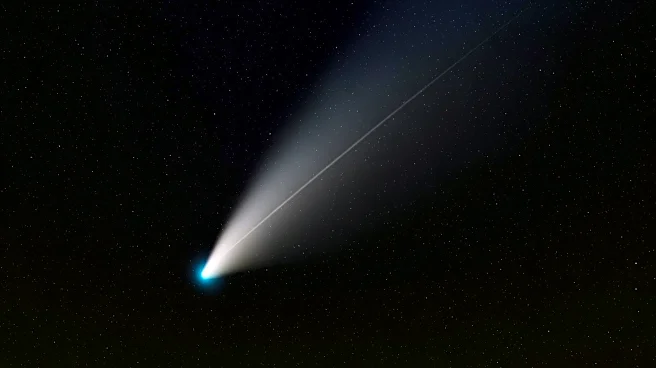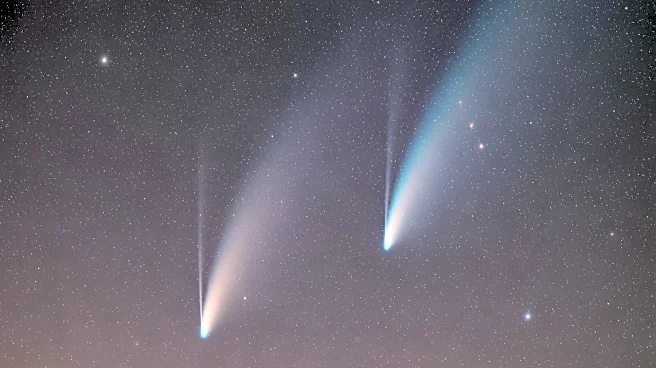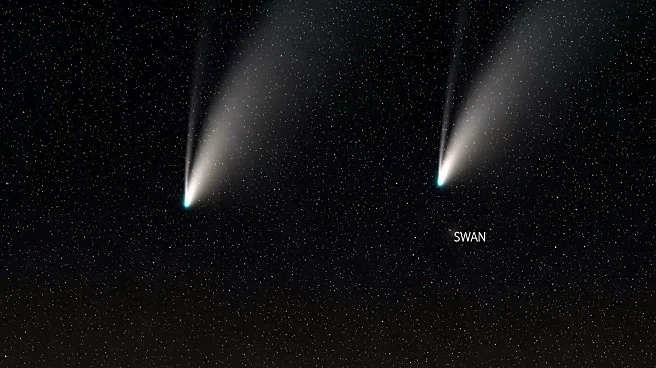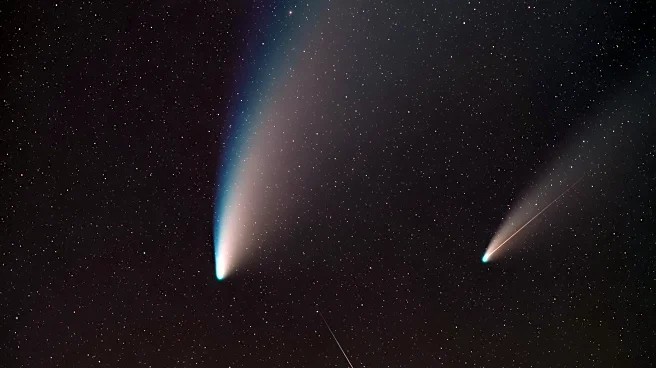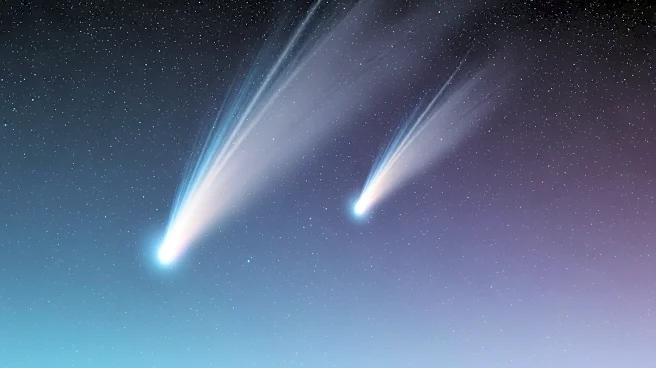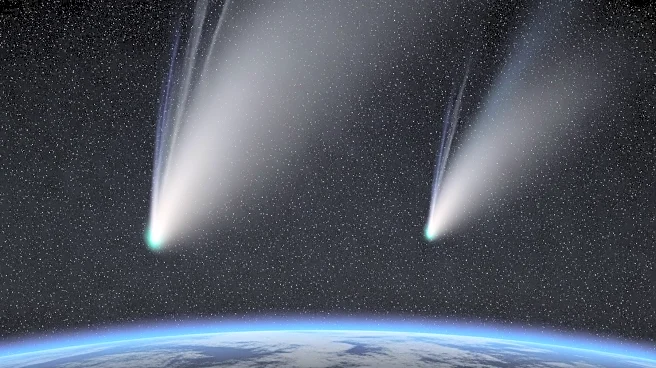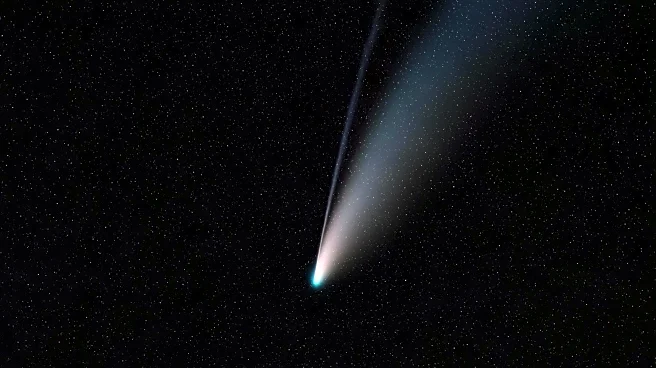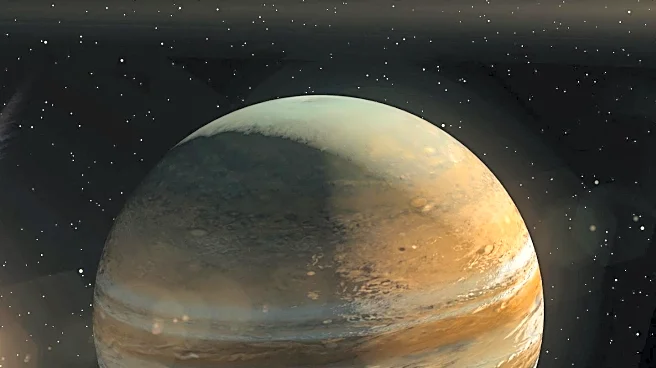What's Happening?
Comets C/2025 A6 (Lemmon) and C/2025 R2 (SWAN) are set to reach their brightest visibility this week, offering a rare opportunity for skywatchers. Comet Lemmon will be closest to Earth on October 21, while
Comet SWAN will reach its closest point on October 20. Both comets are visible in the night sky, with Lemmon being potentially visible to the naked eye in dark conditions. Comet SWAN, however, may require binoculars for observation due to its dimmer magnitude. The comets are on different orbital paths, with Lemmon having a 1,350-year orbit and SWAN a 20,000-year orbit.
Why It's Important?
The simultaneous visibility of two comets is a rare event that provides an opportunity for both amateur and professional astronomers to observe and study these celestial bodies. Such events can increase public interest in astronomy and provide valuable data for scientific research. Observing comets can help scientists understand more about the composition and behavior of these icy bodies, which are remnants from the early solar system. The event also highlights the capabilities of modern astronomical tools and projects that make space phenomena accessible to a global audience.
What's Next?
Following their closest approach, Comet Lemmon will continue its journey through the solar system, eventually looping around the sun on November 8, 2025. Comet SWAN will exit the inner solar system, continuing its long-period orbit. Skywatchers are encouraged to observe the comets using binoculars or telescopes, and various online platforms provide guides and charts for locating them in the night sky.
Beyond the Headlines
The visibility of these comets may spark discussions about the importance of space observation and the role of international collaboration in astronomy. The event underscores the advancements in technology that allow for real-time global participation in astronomical events, fostering a sense of shared scientific discovery.
